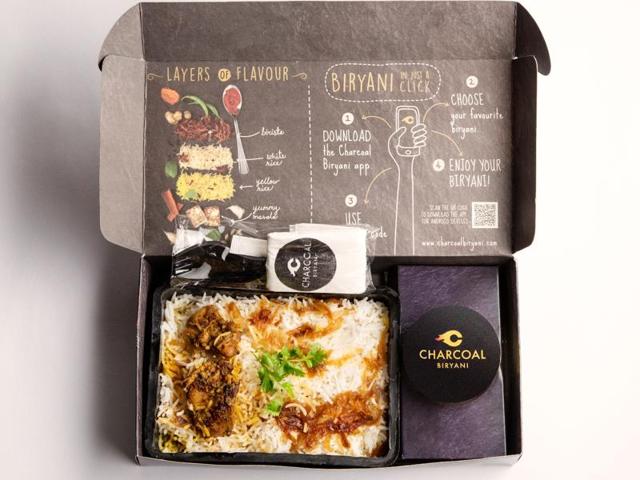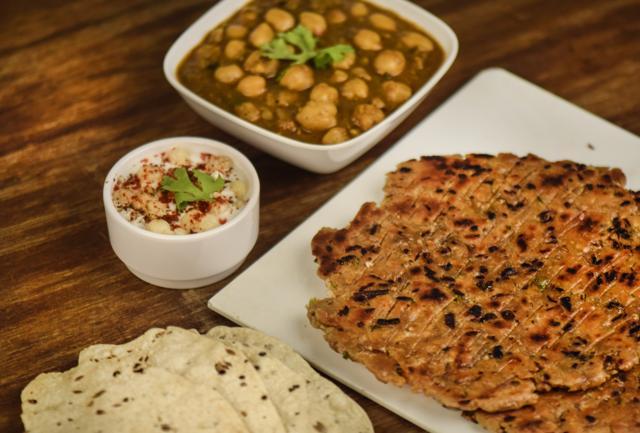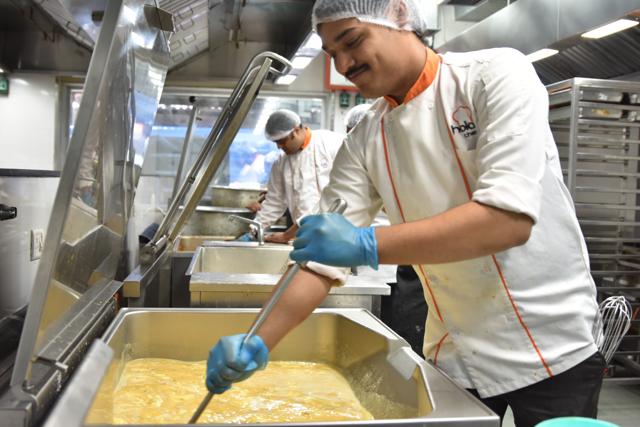How home deliveries are changing the way we eat in
From orders dictated on phones to those placed on an app, food delivery has come a long way. And hole-in-the-wall kiosks and posh restaurants are embracing it alike
It’s 12.30pm on a weekday, and we’re at Sindhful, a newly opened Sindhi food delivery service based in a commercial complex in Khar. The phone lines are buzzing incessantly, and a steady flow of delivery boys walk in and out of the kitchen holding cloth bags stuffed to the brim with neatly packed boxes. The activity is only interrupted with beeps on several mobile phones. These are notifications for online orders from services such as Zomato, Scootsy and Swiggy.

Finally, at around 2.30pm, the noise dies down as its six chefs take a quick chai break before preparations begin for an equally busy evening. Sindhful’s 26-year-old co-founder, Sannat Ahuja, has been on this crazy schedule for the last two months, and has already started scouting for locations to set up another kitchen. “We’re not able to keep up with the demand,” he says. This is true for many young (often first-time) entrepreneurs like him. They are passionate about the food business, and are finding an economical business model in operating a delivery-only service.

Need for good food
Mumbai may be plagued by skyrocketing real estate prices and lack of space, but these minuses have given rise to an alternate dining-in option — new-age deliveries. The online food ordering business is estimated to be Rs 5,000 to Rs 6,000 crore in India, according to a report by India Brand Equity Foundation. This includes aggregators (like Scootsy, Swiggy, Zomato and others), food ordering websites (like FreshMenu, HolaChef, Box8) and delivery-only kitchens such as SpiceBox (for office lunches) and Calorie Care (for healthy meals).
“The ordering-in phenomena is picking up while going-out-to-eat might stagnate. This is due to changes in lifestyle like lack of time and traffic on the streets,” says Saurabh Saxena, founder-CEO of HolaChef, which delivers home-cooked meals on demand.
Read: An hour with the foot soldiers of food delivery
It is true. Imagine having to put together a meal after a long, tiring day (especially after that mentally exhausting sales meeting) versus getting fresh food delivered to your doorstep at the click of a button. A lot of urban, 20-somethings are likely to pick the second option. And hyperlocal services like Scootsy, Swiggy, Zomato and Food Panda are competing with each other to reach you fastest, offer the widest variety, and entice you with attractive discounts.
To cater to its upmarket audience between South Mumbai to Andheri and Powai, Scootsy has over 400 riders on motorbikes, whereas HolaChef has more than a hundred delivery boys who cover the length and breadth of the city. Recently, HolaChef (which counts, among others, Ratan Tata as an investor) bagged $1.95 million (Rs 13 crore) in funding, an indicator that even serious investors are betting big on the food delivery business.

Focused menus
Apart from saving big money on rentals and wait staff for a traditional restaurant, delivery services can divert resources towards a better food experience. Since the beginning of this year, we’ve seen services that specialise in a certain cuisine (Bohri, Sindhi), a certain kind of dish (The Curry Brothers, who offer curry combos, Charcoal Biryani) and offerings for customers with special needs (tiffin service for diabetics). (See box for details)
When popular TV show host and chef Saransh Goila was looking to set up his venture, Goila Butter Chicken, having a takeaway- and a delivery-only business seemed the most natural choice. His signature dish — which became popular as a social media phenomenon — is now accessible to more people.

“We decided to be delivery-only, because that way I could feed more people compared to what I could at a restaurant. And food becomes the only focus, not the ambience,” says Goila, who currently delivers between Andheri and Juhu. Ahuja of Sindhful agrees: “A delivery-only model also lets you focus on things like packaging (which becomes the face of your venture) and offering quality food consistently.”
Restaurants join in
For established restaurants, too, food delivery is not limited to an add-on service. In a severely competitive market like Mumbai (where demand is always higher than supply), restaurant owners have realised that their customers value convenience over experience. “With shifting dining trends, people like to go out mostly to grab a drink or eat and try a new cuisine. But they’re happy ordering traditional or comfort food at home,” adds Goila.
Read: 8 food delivery services to try in Mumbai
Similarly, for time-strapped working professionals, getting a meal delivered to their desks is a quicker, and a more efficient option. “Being in a location like Nariman Point, there is a lot of demand from offices in the area,” says Farrokh Khambata of Café at the NCPA, which has tied up with Scootsy. Sit-down restaurants like Wok Express (across locations) and the newly opened Ministry of Salads (Kemps Corner) receive an average of 150-200 orders per day. Interestingly, on weekends (considered to be a busy time for restaurants), the number of home deliveries doubles to 300 to 350 orders.

No more dining out?
Does this mean that the delivery model may eventually eat into the restaurant business? “The experience of being served at a restaurant and the experience of dining out cannot be replicated, nor can it be replaced,” insists Vaarun Dhingra of Oye Panjabi, a theme restaurant on the Mumbai-Nasik Highway. Yet, owing to increasing demand in the city, Dhingra recently opened a delivery-only kitchen in Khar.
There are other disadvantages to the delivery-only model. The heavy dependence on logistics can cost you customers. “No matter how good your food is, a delivery venture is bound to struggle if logistics are not taken care of,” says Goila. And in the age of instant gratification and quick service, consumer expectations are bound to be high. “We also suffer from the fact that there is little face-to-face interaction with consumers,” says Saxena of HolaChef. Ultimately, though, whether you are ordering from the comfort of your home, or stepping out for a meal at a fancy restaurant, only good food can satiate a hungry diner.
Here’s why it takes 40 minutes for your order to arrive:

Catch your daily dose of Fashion, Taylor Swift, Health, Festivals, Travel, Relationship, Recipe and all the other Latest Lifestyle News on Hindustan Times Website and APPs.
Catch your daily dose of Fashion, Taylor Swift, Health, Festivals, Travel, Relationship, Recipe and all the other Latest Lifestyle News on Hindustan Times Website and APPs.





